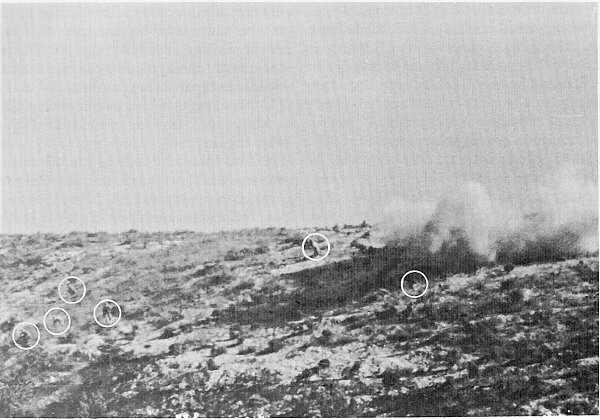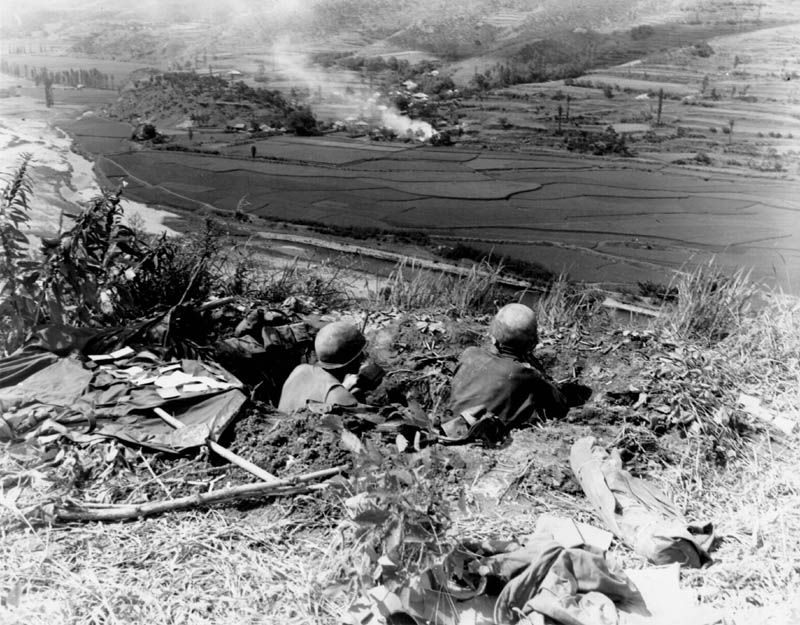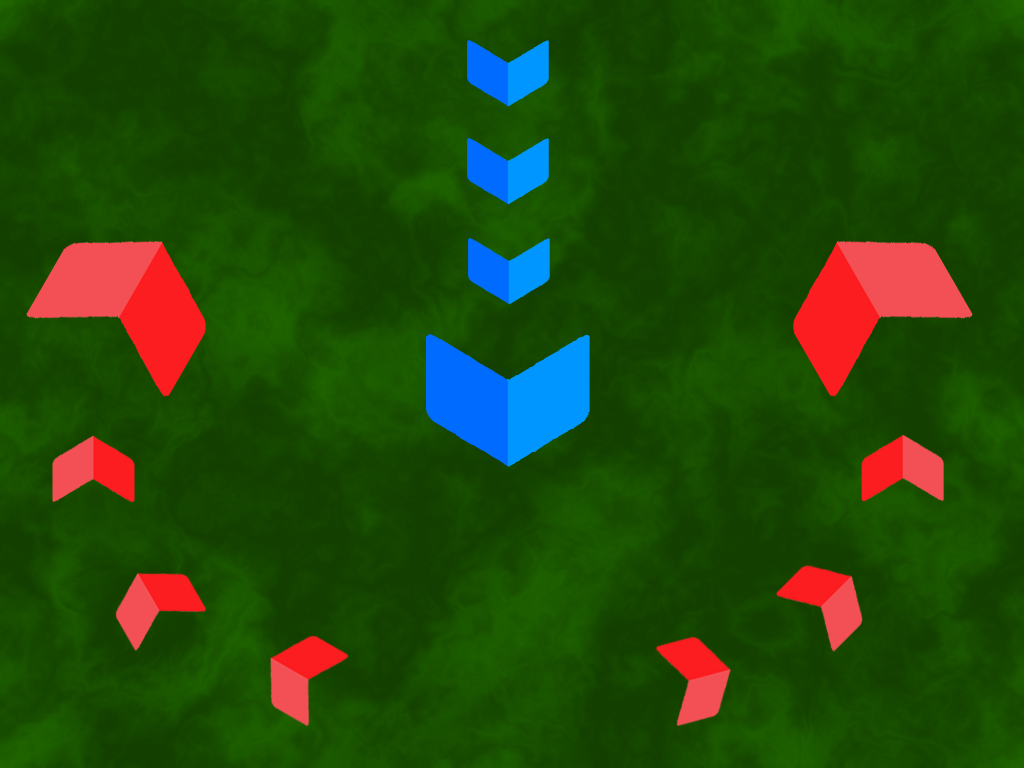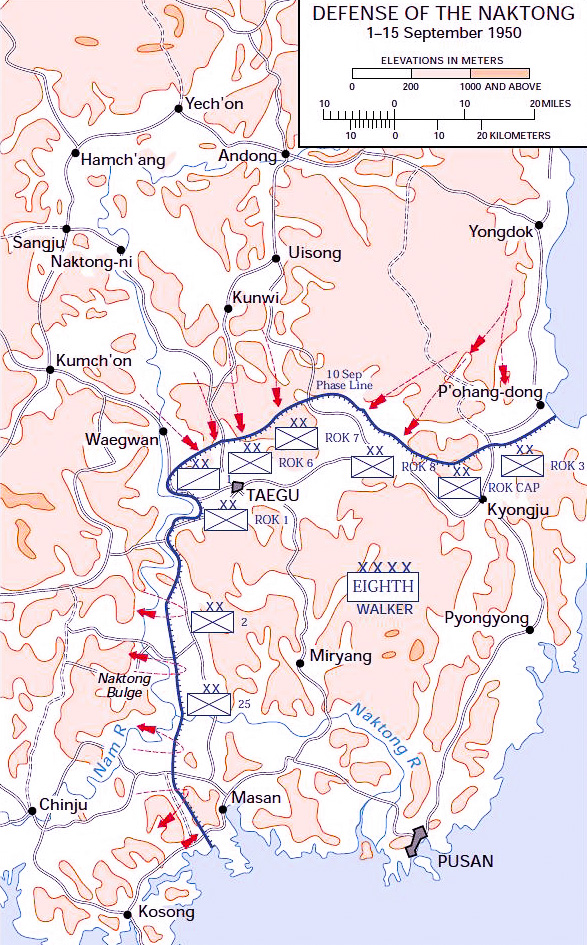|
Battle Of Kyongju
The Battle of Kyongju was an engagement between United Nations Command (UN) and North Korean forces early in the Korean War from August 31 to September 15, 1950, in the vicinity of Kyongju in South Korea. It was a part of the Battle of Pusan Perimeter, and was one of several large engagements fought simultaneously. The battle ended in a victory for the UN after large numbers of United States Army (US) and Republic of Korea Army (ROK) troops repelled a strong North Korean Korean People's Army (KPA) attack. Holding a line north of P'ohang-dong, An'gang-ni, and Kyongju, the so-called "Kyongju corridor," the ROK I Corps was unexpectedly hit with an attack by the KPA's II Corps, part of the wider Great Naktong Offensive. The ROK troops, already demoralized and struggling to maintain a strong defensive line, were easily pushed back from their positions. US units were called in to assist the ROK to repel the attack. Fighting was heavy and the two sides fought to capture and recapture P' ... [...More Info...] [...Related Items...] OR: [Wikipedia] [Google] [Baidu] |
Battle Of Pusan Perimeter
The Battle of the Pusan Perimeter ( ko, 부산 교두보 전투) was a large-scale battle between United Nations Command (UN) and North Korean forces lasting from August 4 to September 18, 1950. It was one of the first major engagements of the Korean War. An army of 140,000 UN troops, having been pushed to the brink of defeat, were rallied to make a final stand against the invading Korean People's Army (KPA), 98,000 men strong. UN forces, having been repeatedly defeated by the advancing KPA, were forced back to the "Pusan Perimeter", a defensive line around an area on the southeastern tip of South Korea that included the port of Busan. The UN troops, consisting mostly of forces from the Republic of Korea Army (ROKA), United States, and United Kingdom, mounted a last stand around the perimeter, fighting off repeated KPA attacks for six weeks as they were engaged around the cities of Taegu, Masan, and Pohang and the Naktong River. The massive KPA assaults were unsuccessful in for ... [...More Info...] [...Related Items...] OR: [Wikipedia] [Google] [Baidu] |
United Nations Command
United Nations Command (UNC or UN Command) is the multinational military force established to support the South Korea, Republic of Korea (South Korea) during and after the Korean War. It was the first international unified command in history, and the first attempt at collective security pursuant to the Charter of the United Nations. The UNC was established on 7 July 1950 following the UN Security Council's recognition of North Korea, North Korean aggression against South Korea. The motion passed because the Soviet Union, a close ally of North Korea and a member of the UN Security Council, was boycotting the UN at the time over its recognition of the Taiwan, Republic of China rather than the China, People's Republic of China. Member states of the United Nations, UN member states were called to provide assistance in repelling the North's invasion, with the UNC providing a cohesive command structure under which the disparate forces would operate. During the course of the war, 22 nat ... [...More Info...] [...Related Items...] OR: [Wikipedia] [Google] [Baidu] |
Double Envelopment
The pincer movement, or double envelopment, is a military maneuver in which forces simultaneously attack both flanks (sides) of an enemy formation. This classic maneuver holds an important foothold throughout the history of warfare. The pincer movement typically occurs when opposing forces advance towards the center of an army that responds by moving its outside forces to the enemy's flanks to surround it. At the same time, a second layer of pincers may attack the more distant flanks to keep reinforcements from the target units. Description A full pincer movement leads to the attacking army facing the enemy in front, on both flanks, and in the rear. If attacking pincers link up in the enemy's rear, the enemy is encircled. Such battles often end in surrendering or destroying the enemy force, but the encircled force can try to break out. They can attack the encirclement from the inside to escape, or a friendly external force can attack from the outside to open an escape rout ... [...More Info...] [...Related Items...] OR: [Wikipedia] [Google] [Baidu] |
Frontal Assault
The military tactic of frontal assault is a direct, full-force attack on the front line of an enemy force, rather than to the flanks or rear of the enemy. It allows for a quick and decisive victory, but at the cost of subjecting the attackers to the maximum defensive power of the enemy; this can make frontal assaults costly even if successful, and often disastrously costly if unsuccessful. It may be used as a last resort when time, terrain, limited command control, or low troop quality do not allow for any battlefield flexibility. The risks of a frontal assault can be mitigated by the use of heavy supporting fire, diversionary attacks, the use of cover (such as smokescreens or the darkness of night), or infiltration tactics. Frontal assaults were common in ancient warfare, where heavy infantry made up the core of armies such as the Greek phalanx and the Roman legion. These dense formations, many ranks deep, would utilize their weight in numbers to press forward and break enemy lin ... [...More Info...] [...Related Items...] OR: [Wikipedia] [Google] [Baidu] |
Pusan
Busan (), officially known as is South Korea's most populous city after Seoul, with a population of over 3.4 million inhabitants. Formerly romanized as Pusan, it is the economic, cultural and educational center of southeastern South Korea, with its port being Korea's busiest and the sixth-busiest in the world. The surrounding "Southeastern Maritime Industrial Region" (including Ulsan, South Gyeongsang, Daegu, and some of North Gyeongsang and South Jeolla) is South Korea's largest industrial area. The large volumes of port traffic and urban population in excess of 1 million make Busan a Large-Port metropolis using the Southampton System of Port-City classification . Busan is divided into 15 major administrative districts and a single county, together housing a population of approximately 3.6 million. The full metropolitan area, the Southeastern Maritime Industrial Region, has a population of approximately 8 million. The most densely built-up areas of the city are situated in a ... [...More Info...] [...Related Items...] OR: [Wikipedia] [Google] [Baidu] |
Great Naktong Offensive
The Great Naktong Offensive was a North Korean military offensive against United Nations Command (UN) forces early in the Korean War, taking place from September 1–15, 1950. It was the North Korean Korean People's Army (KPA)'s unsuccessful final bid to break the Pusan Perimeter established by the UN forces. For the first several months of the war, the KPA successfully defeated and pushed back the UN forces south at each encounter. However, by August the UN troops (which were composed mostly of troops from the United States (US) and Republic of Korea Army (ROK) had been forced into the Pusan Perimeter on the southeast tip of the Korean peninsula. For the first time, the UN troops formed a continuous line which the KPA could neither flank nor overwhelm with superior numbers. KPA offensives on the perimeter were stalled and by the end of August all momentum was lost. Seeing the danger in a prolonged conflict along the perimeter, the KPA sought a massive offensive for Sep ... [...More Info...] [...Related Items...] OR: [Wikipedia] [Google] [Baidu] |
II Corps (North Korea)
The II Corps is a corps of the Korean People's Army. It was created on June 12, 1950 with Lt. General Kim Kwang-hyop in command. During the Korean War the unit was composed of the 2nd Infantry Division, the 5th Infantry Division, and the 12th Infantry Division.II Corps , accessed May 2011. The 27th Infantry Division was part of the II Corps. It defended the area north of with the [...More Info...] [...Related Items...] OR: [Wikipedia] [Google] [Baidu] |
An'gang-ni
Angang-eup is an '' eup'', or town, and the second-largest subdivision of Gyeongju City. Its 139 square kilometers are home to about 33,300 people and is served by six elementary schools and two joint middle-high schools. Situated next to Gangdong-myeon in the city's northern tip, it is a significant town in its own right. Angang Station is a regular stop on the Donghae Nambu Line. The town center lies on the Hyeongsan River, near where it meets the small Chilpyeongcheon stream. Important local products include rice, apples, and grapes. Administrative divisions * Gapsan-ri (갑산리) * Ganggyo-ri (강교리) * Geomdan-ri (검단리) * Geungye-ri (근계리) * Nodang-ri (노당리) * Daedong-ri (대동리) * Duryu-ri (두류리) * Sabang-ri (사방리) * Sandae-ri (산대리) * Angang-ri (안강리) * Yangwol-ri (양월리) * Oksan-ri (옥산리) * Uktong-ri (육통리) * Cheongnyeong-ri (청령리) * Hagok-ri (하곡리) See also *Subdivisions of Gyeongju The primary subdivisi ... [...More Info...] [...Related Items...] OR: [Wikipedia] [Google] [Baidu] |
P'ohang-dong
Pohang () is a city in the province of North Gyeongsang, South Korea, and a main seaport in the Daegu-Gyeongbuk region. The built-up area of Pohang is located on the alluvium of the mouth of the Hyeongsan River. The city is divided into two wards ( ''gu''), Buk-gu or Northern Ward () and Nam-gu or Southern Ward (). This city has the largest population of North Gyeongsang Province and it has the third-largest land area of any city ( ''si'') in South Korea. History The earliest evidence of human occupation in the Pohang area is from the Mumun Pottery Period (1500–300 BC). Archaeologists have unearthed small villages and megalithic burials (dolmen) from this period. Still a small fishing village at the dawn of the 20th century, the earliest steps toward developing Pohang into a place of greater significance were taken in 1930 with the construction of a modern harbour. Pohang grew rapidly afterward, attaining the designation of town ( ''eup'') in 1931 and then earning th ... [...More Info...] [...Related Items...] OR: [Wikipedia] [Google] [Baidu] |
Korean People's Army
The Korean People's Army (KPA; ) is the military force of North Korea and the armed wing of the Workers' Party of Korea (WPK). Under the ''Songun'' policy, it is the central institution of North Korean society. Currently, WPK General Secretary Kim Jong-un serves as Supreme Commander and the chairman of the WPK Central Military Commission. The KPA consists of five branches: the Ground Force, the Naval Force, the Air and Anti-Air Force, the Strategic Rocket Forces, and the Special Operation Force. The KPA considers its primary adversaries to be the Republic of Korea Armed Forces and United States Forces Korea, across the Korean Demilitarized Zone, as it has since the Armistice Agreement of July 1953. it is the second largest military organisation in the world, with of the North Korean population actively serving, in reserve or in a paramilitary capacity. History Korean People's Revolutionary Army 1932–1948 Kim Il-sung's anti-Japanese guerrilla army, the ... [...More Info...] [...Related Items...] OR: [Wikipedia] [Google] [Baidu] |
Republic Of Korea Army
The Republic of Korea Army (ROKA; ko, 대한민국 육군; Hanja: 大韓民國 陸軍; RR: ''Daehanminguk Yuk-gun''), also known as the ROK Army or South Korean Army, is the army of South Korea, responsible for ground-based warfare. It is the largest of the military branches of the Republic of Korea Armed Forces with 420,000 members . This size is maintained through conscription; South Korean men must complete military service (18 months for army, auxiliary police and marine, 20 months for navy and conscripted firefighter, 21 months for air force and social service, 36 months for alternative service) between the age of 18 and 35. History The modern South Korean army traces its lineage back to the Gwangmu Reform, when the Byeolgigun was established by Emperor Gojong in 1881. The 1st of every October is celebrated in South Korea as Armed Forces Day. It commemorates the day during the Korean War when units of the ROK Army first crossed the 38th Parallel, thus leading the ... [...More Info...] [...Related Items...] OR: [Wikipedia] [Google] [Baidu] |
United States Army
The United States Army (USA) is the land service branch of the United States Armed Forces. It is one of the eight U.S. uniformed services, and is designated as the Army of the United States in the U.S. Constitution.Article II, section 2, clause 1 of the United States Constitution (1789). See alsTitle 10, Subtitle B, Chapter 301, Section 3001 The oldest and most senior branch of the U.S. military in order of precedence, the modern U.S. Army has its roots in the Continental Army, which was formed 14 June 1775 to fight the American Revolutionary War (1775–1783)—before the United States was established as a country. After the Revolutionary War, the Congress of the Confederation created the United States Army on 3 June 1784 to replace the disbanded Continental Army.Library of CongressJournals of the Continental Congress, Volume 27/ref> The United States Army considers itself to be a continuation of the Continental Army, and thus considers its institutional inception to be th ... [...More Info...] [...Related Items...] OR: [Wikipedia] [Google] [Baidu] |





